
Baixa: The Heartbeat of Lisbon
Explore Baixa in Lisbon: A blend of historic charm, cultural vibrancy, and modern allure in the heart of Portugal’s capital city.
Baixa, also known as Lisbon's downtown, is the vibrant core of the city. This area is a blend of history, culture, and modernity. With its grand squares, neoclassical buildings, and bustling streets, Baixa offers a unique experience for every traveler. Start your journey at Praça do Comércio, a large waterfront square that opens up to the Tagus River. Here, you can enjoy stunning views and take a leisurely stroll along the riverbank. The square is also home to the iconic Arco da Rua Augusta, a triumphal arch that offers panoramic views of the city from its terrace. Venture into the narrow streets and discover a mix of traditional shops and trendy boutiques. Rua Augusta, the main pedestrian street, is lined with cafes, restaurants, and street performers, creating an energetic atmosphere. Don't miss the chance to ride the Elevador de Santa Justa, a historic lift that provides an elevated view of the neighborhood and beyond. Baixa is not just about sightseeing; it is also a culinary hotspot. From traditional Portuguese eateries to modern fusion restaurants, the dining options are endless. Be sure to try the local delicacies, such as pastel de nata (custard tart) and bacalhau (salted codfish). Whether you're a history buff, a foodie, or simply looking to soak in the lively ambiance, Baixa is a must-visit on your Lisbon itinerary. Its charm and energy will captivate you, making it an unforgettable part of your Portuguese adventure.
Local tips in Baixa
- Visit Praça do Comércio early in the morning to avoid crowds and capture the best photos.
- Wear comfortable shoes as the streets are cobblestone and can be uneven.
- Take a ride on the Elevador de Santa Justa for stunning views of Baixa and beyond.
- Try local specialties like pastel de nata at one of the many cafes along Rua Augusta.
- Keep an eye on your belongings, especially in crowded areas, to avoid pickpockets.
Baixa: The Heartbeat of Lisbon
Baixa, also known as Lisbon's downtown, is the vibrant core of the city. This area is a blend of history, culture, and modernity. With its grand squares, neoclassical buildings, and bustling streets, Baixa offers a unique experience for every traveler. Start your journey at Praça do Comércio, a large waterfront square that opens up to the Tagus River. Here, you can enjoy stunning views and take a leisurely stroll along the riverbank. The square is also home to the iconic Arco da Rua Augusta, a triumphal arch that offers panoramic views of the city from its terrace. Venture into the narrow streets and discover a mix of traditional shops and trendy boutiques. Rua Augusta, the main pedestrian street, is lined with cafes, restaurants, and street performers, creating an energetic atmosphere. Don't miss the chance to ride the Elevador de Santa Justa, a historic lift that provides an elevated view of the neighborhood and beyond. Baixa is not just about sightseeing; it is also a culinary hotspot. From traditional Portuguese eateries to modern fusion restaurants, the dining options are endless. Be sure to try the local delicacies, such as pastel de nata (custard tart) and bacalhau (salted codfish). Whether you're a history buff, a foodie, or simply looking to soak in the lively ambiance, Baixa is a must-visit on your Lisbon itinerary. Its charm and energy will captivate you, making it an unforgettable part of your Portuguese adventure.
Iconic landmarks you can’t miss
Praça do Comércio
Explore Praça do Comércio, Lisbon's stunning historical landmark, where rich heritage meets breathtaking views of the Tagus River.
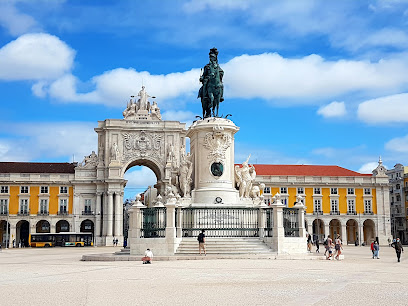
Padrão dos Descobrimentos
Explore the Padrão dos Descobrimentos, a monumental tribute to Portugal's Age of Discoveries, with stunning views and rich historical significance.
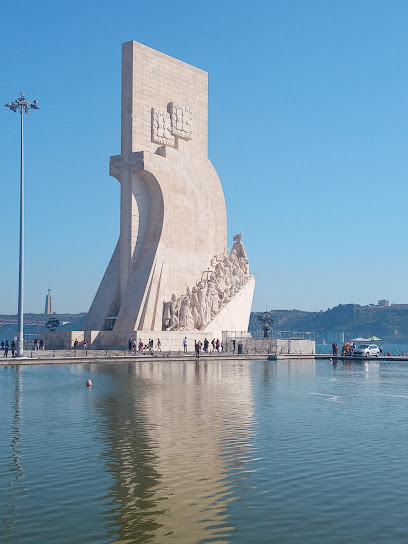
Arco da Rua Augusta
Discover the Arco da Rua Augusta, a stunning historical landmark in Lisbon offering breathtaking views and a glimpse into Portugal's rich heritage.

Carmo Convent
Explore Carmo Convent, an archaeological gem in Lisbon, blending history, art, and stunning Gothic architecture in an unforgettable experience.
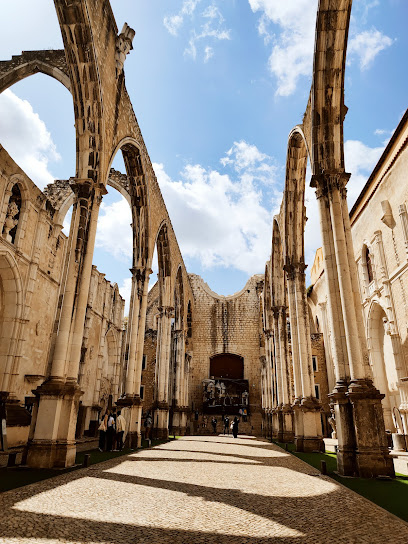
Praça Dom Pedro IV
Explore Praça Dom Pedro IV, a historic square in Lisbon, teeming with culture, stunning architecture, and the lively spirit of the city.
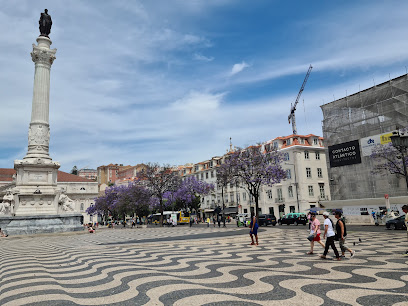
Praça da Figueira
Discover the vibrant heart of Lisbon at Praça da Figueira, a historic square filled with culture, stunning architecture, and local charm.
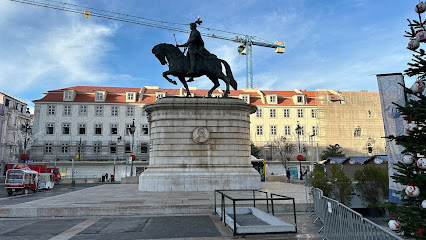
Praça dos Restauradores
Explore the historical elegance of Praça dos Restauradores, a vibrant square in Lisbon showcasing stunning architecture and rich cultural significance.

Fonte Sul do Rossio
Explore the enchanting Fonte Sul do Rossio, a stunning fountain in Lisbon's vibrant heart, surrounded by dining and nightlife.
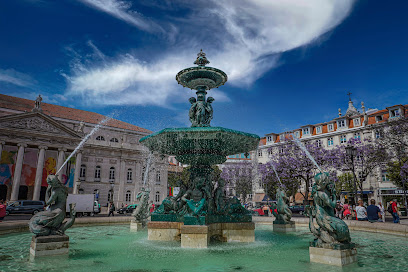
Fonte Norte do Rossio
Discover the beauty of Fonte Norte do Rossio, a stunning Lisbon fountain that captures the essence of the city with its intricate design and vibrant atmosphere.

Statue of António Ribeiro
Explore the Statue of António Ribeiro in Lisbon's Chiado district, a vibrant tribute to Portuguese culture surrounded by lively shops and cafes.

Unmissable attractions to see
Santa Justa Lift
Explore Lisbon from above with the Santa Justa Lift, a stunning architectural marvel offering breathtaking views and easy access to the city's historic sites.

Fonte Sul do Rossio
Experience the serene beauty of Fonte Sul do Rossio, a captivating fountain in the heart of Lisbon, perfect for relaxation and photography.
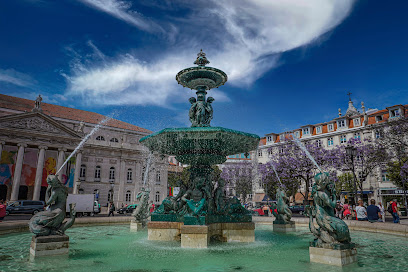
History of Lisbon Mural by Nuno Saraiva
Explore the captivating History of Lisbon Mural by Nuno Saraiva, a vibrant depiction of the city's rich heritage and artistic spirit.
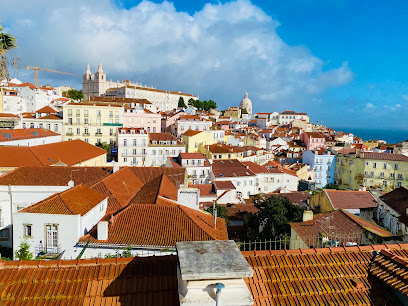
Wheels Adventure By Fabio
Experience the thrill of exploring Lisbon on wheels with Wheels Adventure By Fabio, where adventure meets scenic beauty in the heart of the city.

Essential places to dine
Palácio Chiado
Discover the exquisite flavors of Portugal at Palácio Chiado – where historic elegance meets modern culinary art.
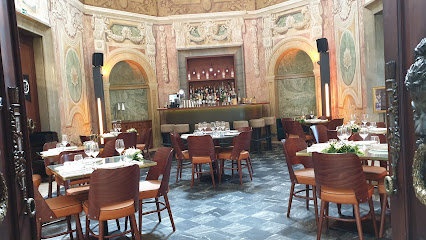
Organi Chiado
Explore the vibrant flavors of plant-based dining at Organi Chiado - where health meets deliciousness in the heart of Lisbon.

Cantinho do Avillez
Experience the best of Portuguese cuisine at Cantinho do Avillez in Lisbon - where tradition meets innovation in every dish.

Cantinho do Avillez - Chiado
Discover the vibrant flavors of Portugal at Cantinho do Avillez - Chiado, where tradition meets innovation in every dish.

Sacramento do Chiado
Discover Sacramento do Chiado: A perfect blend of traditional Portuguese cuisine and modern dining experience in Lisbon's vibrant heart.
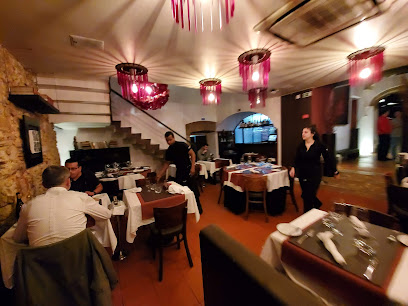
Adega Da Mó
Experience authentic Portuguese cuisine at Adega Da Mó in Lisbon - where tradition meets taste in a cozy atmosphere.

Restaurante O Chiado
Experience the taste of Portugal at Restaurante O Chiado – where tradition meets innovation in every dish.
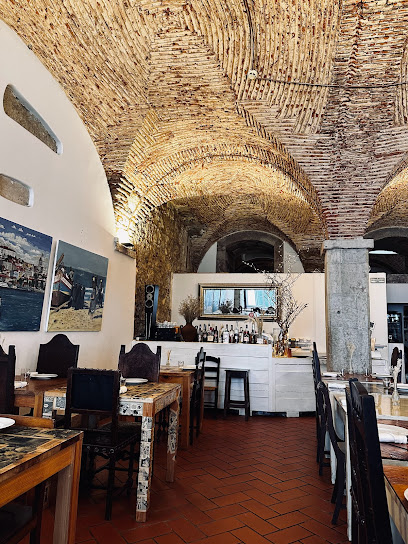
Em Alta Na Baixa
Experience authentic Portuguese cuisine at Em Alta Na Baixa in Lisbon - where tradition meets modernity in every delicious bite.
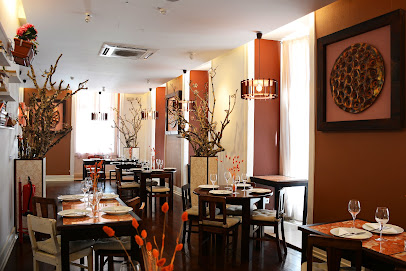
Taberna da Baixa
Savor authentic Portuguese cuisine at Taberna da Baixa in Lisbon – where tradition meets taste.

Brazilian Concept Baixa Chiado
Experience authentic Brazilian cuisine in Lisbon's vibrant Baixa Chiado neighborhood with delightful dishes and warm hospitality.
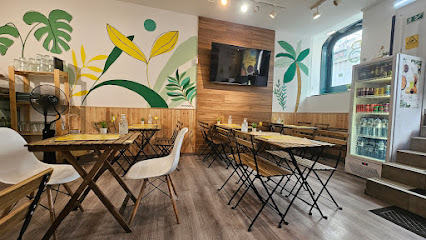
Taberna da Baixa - Casa de Petiscos
Experience the vibrant flavors of Portugal at Taberna da Baixa, where traditional meets contemporary in every dish.
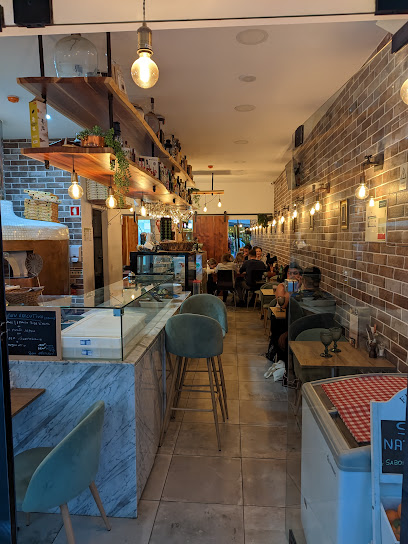
Markets, malls and hidden boutiques
Flying Tiger Copenhagen
Discover a world of unique gifts and whimsical surprises at Flying Tiger Copenhagen in Lisbon, perfect for all ages and tastes.

A Vida Portuguesa
Explore the essence of Portugal at A Vida Portuguesa, where traditional craftsmanship meets modern home decor in the heart of Lisbon.
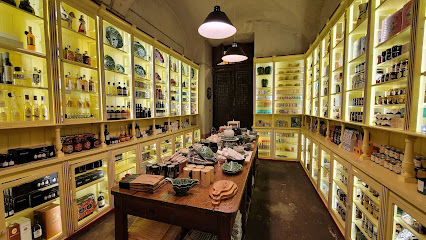
A Outra Face da Lua (Baixa)
Explore A Outra Face da Lua in Lisbon for an extraordinary vintage shopping experience, where unique clothing finds await in a charming atmosphere.
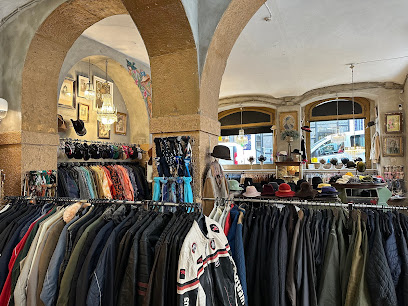
The Feeting Room Lisboa
Explore The Feeting Room Lisboa for an unforgettable blend of fashion, local craftsmanship, and a cozy café experience in the heart of Lisbon.
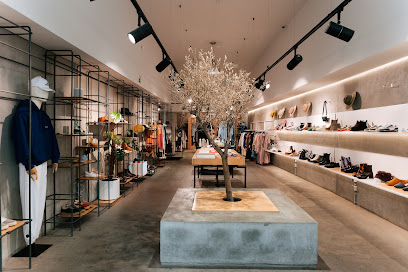
Soma Ideas
Explore Soma Ideas in Lisbon for unique handcrafted souvenirs, graphic designs, and delightful toys that celebrate Portuguese culture.
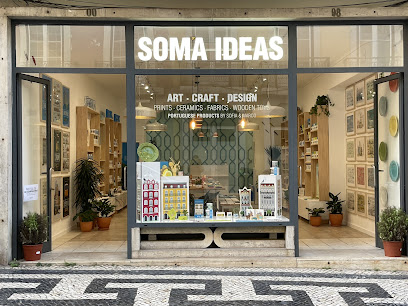
Buda
Explore Buda, a stylish clothing store in Lisbon offering a curated selection of modern and classic fashion pieces for every taste.
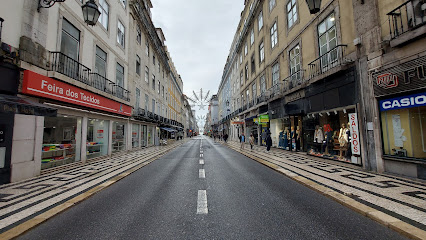
Charm Discovery Experiences Shop
Discover unique gifts and local craftsmanship at Lisbon's Charm Discovery Experiences Shop, where every item tells a story.

Oslo
Explore Oslo Clothing Store in Lisbon for contemporary fashion that captures the vibrant spirit of the city, perfect for locals and tourists alike.

Traces of Me Chiado
Discover unique fashion and home goods at Traces of Me Chiado, a stylish boutique in Lisbon's vibrant shopping district.
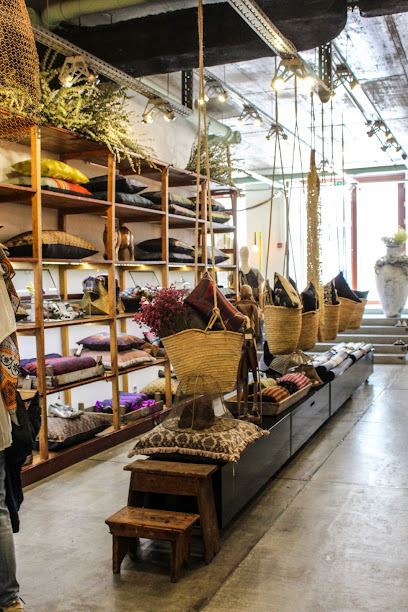
Zeva Boutiques
Experience the essence of Lisbon fashion at Zeva Boutiques, where unique finds and local charm meet.
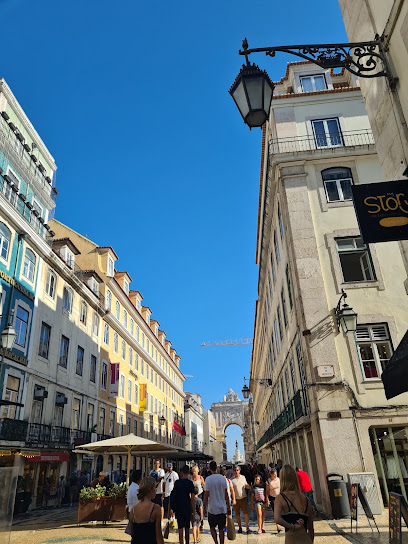
Essential bars & hidden hideouts
Delirium Café
Experience the vibrant atmosphere and extensive beer selection at Delirium Café in Lisbon, a must-visit for food and beer enthusiasts.
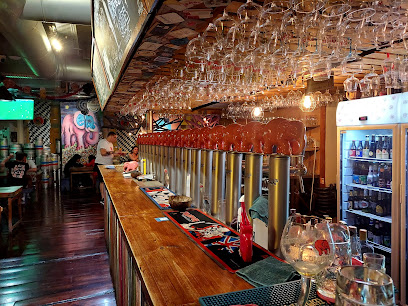
The George
Enjoy a taste of Britain at The George, a vibrant gastropub in Lisbon, with live music and a sports bar atmosphere.
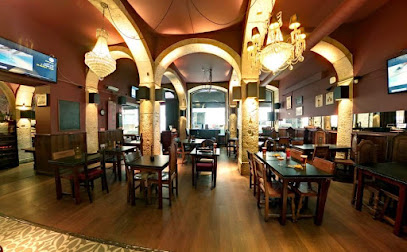
Cerveja Canil Baixa - Craft Beer
Experience the best of Lisbon's craft beer scene at Cerveja Canil Baixa, offering an extensive selection in a cozy, inviting atmosphere.
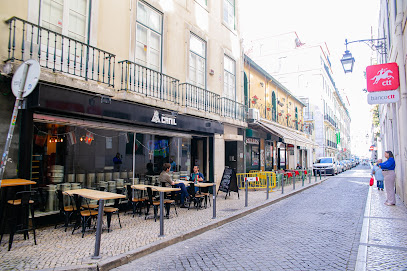
Boutique Taberna
Experience the authentic charm of Lisbon at Boutique Taberna, where local wines and delicious tapas come together in a cozy atmosphere.
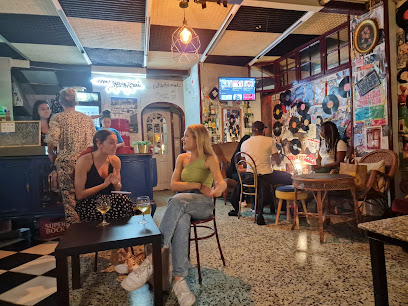
Groove Bar
Discover Groove Bar: Lisbon's lively cocktail bar offering creative drinks and a vibrant atmosphere for unforgettable nights.
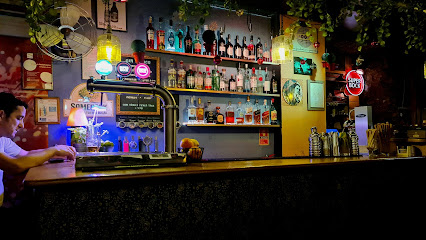
Maria Caxuxa
Experience the vibrant nightlife of Lisbon at Maria Caxuxa, where creative cocktails and a lively atmosphere await you.
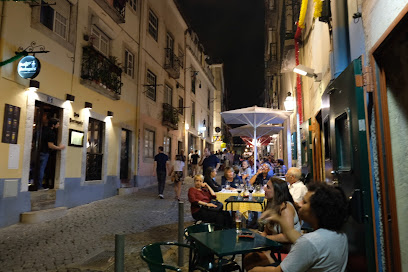
Ruby Rosa - Lisbon Art Stay
Discover Ruby Rosa, Lisbon's vibrant rooftop bar offering exquisite cocktails and brunch with stunning city views.
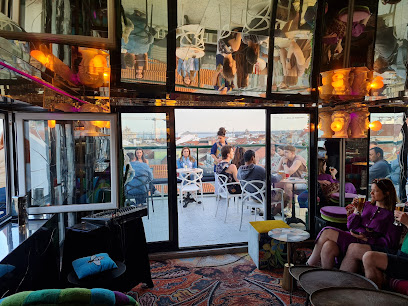
Shoes n´Booze Bar
Experience the vibrant nightlife at Shoes n'Booze Bar, where delicious cocktails and tapas come together in the heart of Lisbon.

O Jardim Wine Bar
Experience the enchanting atmosphere of O Jardim Wine Bar, where exquisite wines and local flavors create the perfect retreat in Lisbon.

Gin66
Explore the vibrant nightlife of Lisbon at Gin66, where a diverse selection of gins and a lively atmosphere await every visitor.
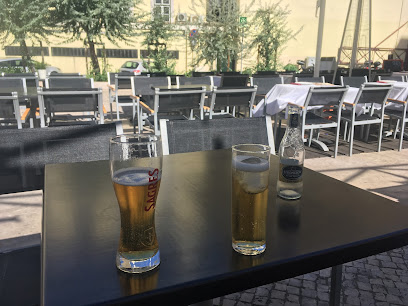
Local Phrases
-
- HelloOlá
[oh-lah] - GoodbyeAdeus
[ah-deh-oosh] - YesSim
[seem] - NoNão
[now] - Please/You're welcomePor favor/De nada
[pohr fah-vohr/dee nah-dah] - Thank youObrigado
[oh-bree-gah-doo] - Excuse me/SorryDesculpe/Desculpa
[dehs-kool-peh/dehs-kool-pah] - How are you?Como está?
[koh-moo ehs-tah] - Fine. And you?Bem. E você?
[behn/eh voh-seh] - Do you speak English?Fala inglês?
[fah-lah een-glehsh] - I don't understandNão entendo
[now ehn-tehn-doo]
- HelloOlá
-
- I'd like to see the menu, pleaseGostaria de ver o menu, por favor
[goh-stah-ree-ah deh vehr ooh meh-noo/por fah-vohr] - I don't eat meatNão como carne
[now koh-moo kahr-neh] - Cheers!Saúde!
[sow-deh] - I would like to pay, pleaseGostaria de pagar, por favor
[goh-stah-ree-ah deh pah-gahr/por fah-vohr]
- I'd like to see the menu, pleaseGostaria de ver o menu, por favor
-
- Help!Socorro!
[soh-koh-roh] - Go away!Vai embora!
[vah-ee ehm-boh-rah] - Call the Police!Chame a polícia!
[shah-meh ah poh-lee-see-ah] - Call a doctor!Chame um médico!
[shah-meh oom meh-dee-koo] - I'm lostEstou perdido
[ehs-toh pehr-dee-doo] - I'm illEstou doente
[ehs-toh doo-ehn-teh]
- Help!Socorro!
-
- I'd like to buy...Gostaria de comprar...
[goh-stah-ree-ah deh kohm-prahr] - I'm just lookingEstou só a ver
[ehs-toh soh ah vehr] - How much is it?Quanto custa?
[kwahn-too koosh-tah] - That's too expensiveIsso é demasiado caro
[ee-soh eh deh-mah-zee-ah-doo kah-roo] - Can you lower the price?Pode baixar o preço?
[poh-deh bahy-shahr ooh preh-soh]
- I'd like to buy...Gostaria de comprar...
-
- What time is it?Que horas são?
[keh oh-rahs sah-oon] - It's one o'clockÉ uma hora
[eh oo-mah oh-rah] - Half past (10)Meia noite e meia
[may-ah noo-ee-teh ee may-ah] - MorningManhã
[mah-nyah] - AfternoonTarde
[tahr-deh] - EveningNoite
[noy-teh] - YesterdayOntem
[ohn-tehm] - TodayHoje
[oh-zheh] - TomorrowAmanhã
[ah-mah-nyah] - 1Um
[oom] - 2Dois
[doh-eesh] - 3Três
[trehs] - 4Quatro
[kwah-troh] - 5Cinco
[seen-koh] - 6Seis
[saysh] - 7Sete
[seh-teh] - 8Oito
[oy-toh] - 9Nove
[noh-veh] - 10Dez
[dehz]
- What time is it?Que horas são?
-
- Where's a/the...?Onde está o/a...?
[ohnd eh-stah oh/ah] - What's the address?Qual é o endereço?
[kwahl eh ooh ehn-deh-reh-soh] - Can you show me (on the map)?Pode mostrar-me (no mapa)?
[poh-deh moh-shtr-meh/noo mah-pah] - When's the next (bus)?Quando é o próximo (autocarro)?
[kwahn-doo eh ooh proh-ksih-moo/ow-toh-kah-roo] - A ticket (to ....)Um bilhete (para ...)
[oom bee-lyeh-teh/pah-rah]
- Where's a/the...?Onde está o/a...?
History of Baixa
-
Before the catastrophic earthquake of 1755, Baixa was a bustling area that represented the commercial heart of Lisbon. The neighborhood, characterized by its narrow streets and vibrant markets, was a hub of trade and commerce, where merchants from all over Europe gathered. The architecture of the time was a mix of Gothic and Manueline styles, reflecting the city’s wealth and importance during the Age of Discoveries.
-
On November 1, 1755, a devastating earthquake struck Lisbon, followed by a tsunami and fires that destroyed much of the city, including Baixa. The destruction led to the death of tens of thousands and left the city in ruins. In the aftermath, the Marquis of Pombal led the reconstruction efforts, implementing a modern grid layout for Baixa, which introduced wider streets and earthquake-resistant buildings, a significant shift in urban planning.
-
The reconstruction of Baixa introduced the Pombaline style, characterized by neoclassical architecture and innovative building techniques. Notable structures include the Praça do Comércio, which served as the main square facing the Tagus River, and the elegant Rua Augusta, lined with shops and cafes. This architectural revival not only shaped the physical landscape of Baixa but also reflected the resilience and forward-thinking spirit of the Portuguese people.
-
The 19th century saw Baixa evolve into a cultural and commercial center. The opening of the first railway station in Lisbon in 1856 further integrated Baixa into the national economy and facilitated trade. Cultural institutions, theaters, and cafés flourished, making Baixa a vibrant meeting place for intellectuals and artists, thus establishing a rich cultural tapestry that would define the neighborhood.
-
Today, Baixa is recognized as a vital part of Lisbon's identity, combining historical significance with modern vibrancy. The neighborhood has been revitalized with pedestrian-friendly streets, shops, and restaurants, attracting both locals and tourists. Events celebrating Fado music and Portuguese cuisine continue to thrive, ensuring that Baixa remains a dynamic representation of Lisbon's cultural heritage.
Baixa Essentials
-
Baixa is centrally located in Lisbon, making it easily accessible from various neighborhoods. You can reach Baixa by taking the Metro (Blue Line to Baixa-Chiado or Green Line to Rossio). Trams 28 and 15 also stop nearby. If you’re coming from Belém, a scenic tram ride along the riverside is recommended. Taxis and rideshares are available throughout the city, and the area is well-connected by bus services.
-
Baixa is a compact neighborhood best explored on foot. The flat terrain makes it easy to stroll between attractions. Public transport options include the Metro, buses, and trams. You can also rent bicycles from local services or use the city’s bike-sharing program. For quick trips, taxis and rideshare apps are widely used.
-
Baixa is generally safe for tourists, but it's wise to remain vigilant. Areas around Rossio Square and the Rua Augusta can attract pickpockets, especially in crowded spaces. Avoid displaying valuables and be cautious in busy tourist hotspots. It's recommended to stay away from less populated side streets at night.
-
In case of emergencies, dial 112 for police, fire, or medical assistance. The local hospital is Hospital de São José, and there are several clinics throughout Baixa. Ensure you have travel insurance that covers medical emergencies. Pharmacies are readily available for minor health issues.
-
Fashion: Do wear comfortable shoes for walking; avoid beachwear outside of beach areas. Religion: Do respect local customs, especially in churches; cover shoulders and knees when visiting religious sites. Public Transport: Do give up your seat for the elderly. Don’t eat or drink on public transit. Greetings: Do greet with a friendly 'Olá' and a smile. Eating & Drinking: Do try local pastries like Pastel de Nata. Don’t engage in loud conversations or disruptive behavior in restaurants.
-
To experience Baixa like a local, visit the Mercado da Ribeira for fresh food and local delicacies. Explore the side streets for hidden cafes and shops that offer authentic Portuguese cuisine. Join a local walking tour to learn about the history and architecture of the area. Engage with locals; they are often friendly and can provide insights into the best places to eat and explore.
Nearby Cities to Baixa
-
Things To Do in Sintra
-
Things To Do in Cascais
-
Things To Do in Setúbal
-
Things To Do in Caldas da Rainha
-
Things To Do in Évora
-
Things To Do in Viseu
-
Things To Do in Tomar
-
Things To Do in Coimbra
-
Things To Do in Badajoz
-
Things To Do in Faro
-
Things To Do in Aveiro
-
Things To Do in Huelva
-
Things To Do in Porto
-
Things To Do in Lamego
-
Things To Do in Vila Real













